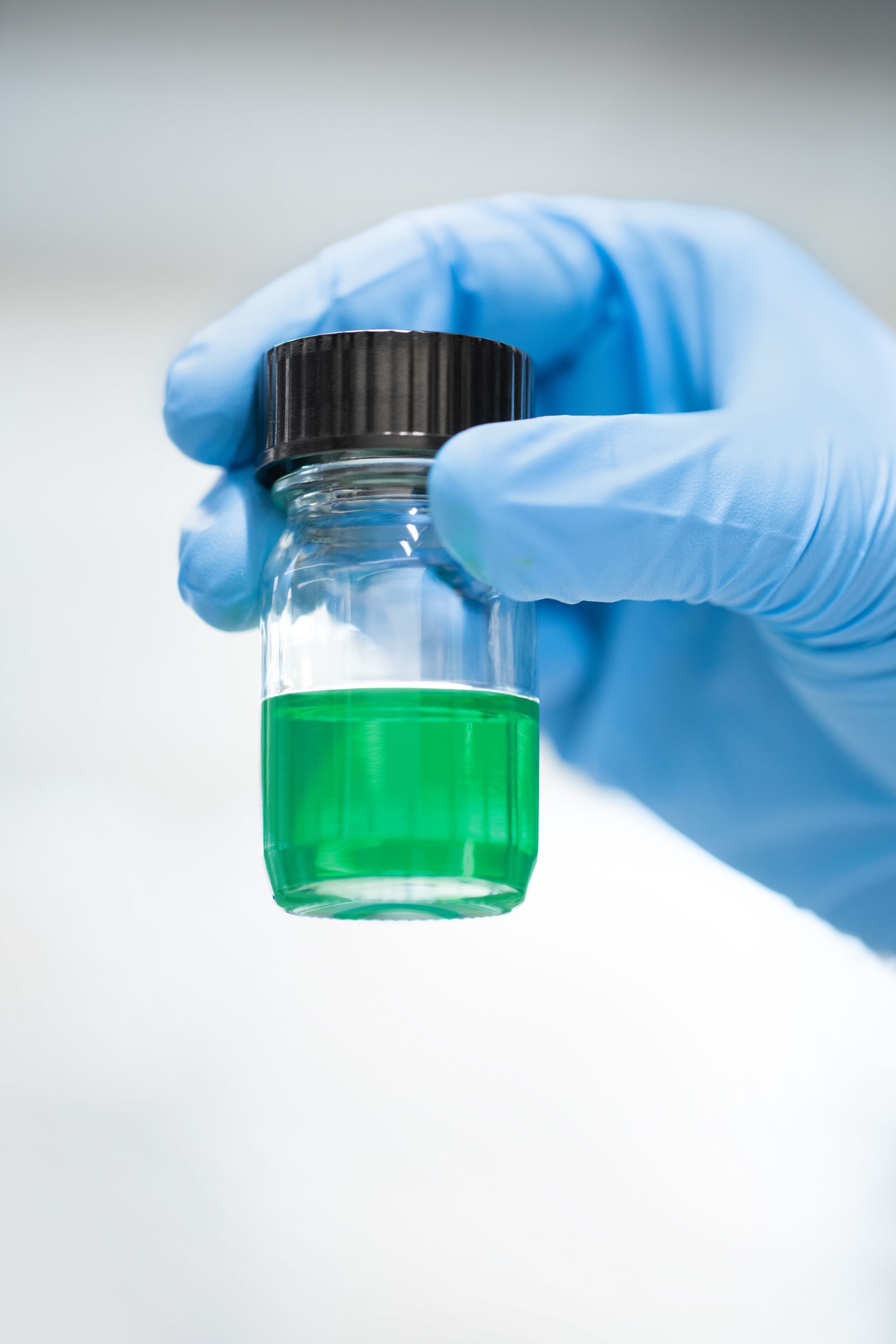Cyan, yellow, magenta: the liquids in the pipettes, test tubes and flasks here in the laboratory all gleam brightly, except for black. And yet each one is different. The special properties are often in the range of 100 nanometers. That’s how small the color pigments are that float in the inks. And that’s how subtle the differences can be that make up a printed image in inkjet printing. Dr. Peter Hachmann and his team of chemists and lab technicians have a heightened eye for detail, making them a perfect fit to study these factors. How much pigment can the ink tolerate before it becomes too viscous? How high is the surface tension? Which raw materials can be used? These are the questions they have to answer to perfectly match inks to the machines and applications.
“Customers know exactly what the machine should produce. What this means in terms of ink is not always immediately clear. That’s what we find out.” He notes drying behavior as an example. “Ink must not dry on the print head, but it should dry very quickly once on the paper. We have to find the optimum balance,” says Peter Hachmann. The team’s work also lays the foundation at HEIDELBERG for increased sales throughout the service life of a digital printing press, as ink is a high-tech product, especially in inkjet. Three UV ink series developed in-house are currently in use for different requirements. They run in the fully digital Gallus One printing system, which prints high-quality labels. These colors are very durable and abrasion-resistant.
The chemical component is one aspect of ink development. The other is the reality check during printing. “With inkjet, everything interacts with everything else. You can’t completely predict the printing results, tests are inevitable,” says Peter Hachmann, who started as a mechanical engineer at HEIDELBERG more than twenty years ago. That is why the lab works closely with HEIDELBERG’s in-house process engineering department. After all, seals and hoses also have to withstand the ink. But it is primarily the test printing unit, where drying performance and other parameters can be set, that shows how the print heads will work with a new ink.
Water-based ink for digital inkjet printing is currently a hot future topic in the laboratory. There are two reasons for this. On the one hand, unlike UV inks, water-based inks do not contain reactive substances and are therefore more environmentally friendly, making the printed products easy to recycle. They can also be used in many areas and applications. Peter Hachmann explains the challenge: “The goal is to maintain high quality with as little pigment and binder as possible.” And he knows that this means much more work in the nanometer area.

Ink is a mixture of several substances that do not or only slightly react with each other. Its main component is a carrier such as water. Added to this are binders, photo initiators, thinners, various additives and the color pigments. The pigments float in the liquid without dissolving or settling in it; this is referred to as dispersion.
